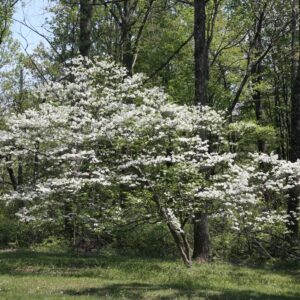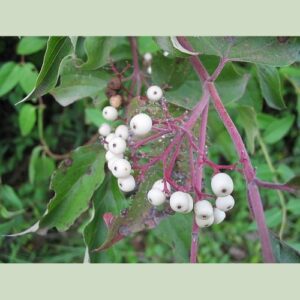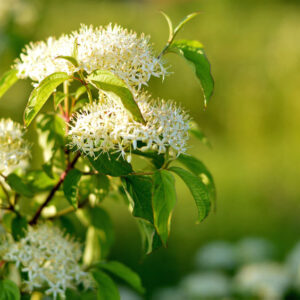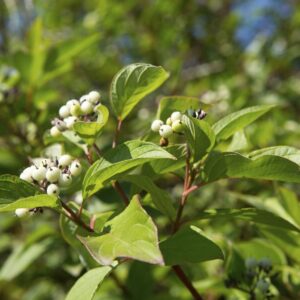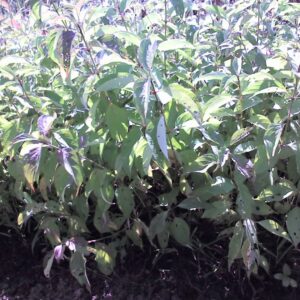Wholesale Dogwood Shrubs for Sale in Michigan
Dogwood, one of the most common deciduous plants found throughout New England, encompasses a somewhat extensive group of woody trees and shrubs that fall under the same genus, Cornus. Dogwood trees and shrubs are popular because of the interesting display they add to a landscape year-round.
The dogwood tree actually rose to popularity, in part, during America’s early history. Both George Washington and Thomas Jefferson planted the magnificent blooming trees on their respective estates, bringing their beauty to the forefront of people’s minds. A variety of different types of dogwood trees and shrubs are frequently being used to enhance home gardens, commercial properties, and public landscapes.
Why Grow Dogwood Shrubs
Dogwood trees and shrubs have beauty to offer in every season. In spring, their flowers blossom in delicate clusters. Blooms are most often white, though sometimes you may find them in blush pinks. As the flowers fade into summer, the dogwood’s glossy, rich green leaves move into focus, helping to fill out their surrounding landscape.
But unlike most plant life, dogwoods are lauded more for their scenic fall and winter presence. Early fall turns the dogwood’s green foliage to a striking red autumnal hue as scarlet berries begin to grow amongst them. The colorful berries often hang on until early to mid-winter, when the foliage has dropped and the barren branches become sculpture-like. Some species of dogwood are also known for their bright red winter stems that liven up an otherwise muted seasonal landscape.
In addition to their evolving seasonal beauty, dogwood trees and shrubs are an ideal choice for residential landscapes because of their manageable size. The trees don’t typically grow beyond 25 feet, suiting them well to smaller yards where trees might otherwise not have enough room to thrive. Dogwood shrubs also offer the same beauty as their taller counterparts, but are even more compact. This type of shrub can also be used to grow hedges, which can be attractive and practical on many properties.
How to Grow Dogwood Shrubs
Like many deciduous shrubs, dogwood shrubs are considered low-maintenance and easy to grow when planted correctly and in a spot with ideal conditions. Dogwood grows quickly, at a rate of approximately one foot per year. As you’re deciding where to plant your dogwood shrub, be sure to look for a location that meets the following criteria:
Soil Conditions for Dogwood Shrubs
Dogwood grows best in rich, moist soil. It often thrives in boggy soil conditions, so long as there is no standing water. In the wild, dogwood is commonly found along streams and near other bodies of water. It can also grow in dry soil, but will need consistent supplemental watering to maintain moisture levels. Soil with a pH between 5-7 is ideal. Dogwood does not do well in alkaline soil.
Light Conditions for Dogwood Shrubs
Dogwood can grow in full sun or partial shade. Ideally, your shrub should be in a spot where it gets about 4-5 hours of direct sunlight per day to produce optimal foliage, fruit, flowering, and stem color. Make sure it does not receive too much sun though, as dogwood is more tolerant of cold than of heat.
Planting Dogwood Shrubs
Plant dogwood trees and shrubs in spring or early summer. Dig the hole to the depth of the root ball and at least one foot wider than root spread, to allow room for the plant to establish. Water deeply once planted and apply a 1-2-inch layer of mulch around the shrub or tree (not directly on). Multiple dogwood shrubs should be planted anywhere between 4-8 feet apart. Space shrubs closer if you want to form hedges and further for specimen planting.
Ongoing Dogwood Shrub Maintenance
Dogwood shrubs and trees are low-maintenance once established. The most important thing is to ensure they have consistent moisture. In the right conditions, dogwood can live for up to 80 years on average.
Fertilizing Dogwood Shrubs
Too much fertilizer can kill newly-planted dogwood, so after applying a light layer with the initial planting, it is recommended that you wait until the second growing season to apply any more. Established dogwood does not require regular fertilizing, but if you think your species could benefit from it you may apply a light layer of fertilizer once or twice early in the season.
Watering Dogwood Shrubs
Water dogwood regularly throughout the first growing season. Once established, rainfall should be adequate. Maintaining a layer of mulch around your shrub or tree will also help retain soil moisture. Dogwood will need supplemental watering during dry spells.
Pruning Dogwood Shrubs
Minimal pruning is required to maintain dogwood trees and shrubs. Every five years or so you should prune, just to maintain shape. Remove dead or diseased stems when you see them. If your species has bright stems and starts to fade with age, you may cut back approximately one third of the faded stems in spring or late winter to encourage new growth.
Disease in Dogwood Shrubs
Dogwood shrubs are more robust than dogwood trees, but both are vulnerable to fungal pathogens. Anthracnose is one of the most common fungal diseases to attack dogwood, causing unsightly leaf spotting and eventually twig dieback if left unchecked. You can improve infected tree health by pruning dead and diseased stems or, in severe cases, with the use of fungicide treatment. Fungicide spray may help prevent disease in dogwood, but it mostly just needs good circulation for foliage and adequate sunlight (shrubs planted in partial shade are typically more susceptible).
At Cold Stream Farm, we offer dogwood shrubs and trees in bulk at affordable wholesale prices to help your nursery meet the demand for this popular plant. No minimum order is required and we can deliver from our location in Free Soil, Michigan to anywhere in the contiguous 48 states. For individual property owners, we also offer our dogwood bareroot seedlings and transplants for retail purchase.
Place an order online today for all of the plants and planting supplies you need for your home or plant business!

